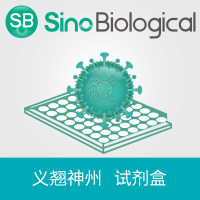Use of Commercially Available ELISA Kits for Detection of Foodborne Pathogens
互联网
610
To understand the principle of an immunoassay, one must be familiar with the antibody-antigen relationship. An antigen is a molecule that, when injected into an animal, will elicit an antibody response. Antigens may be proteins, polypeptides, or carbohydrates (glycolipids or glycoproteins), and each antigen may contain one, or numerous, antigenic determinants or epitopes ( 1
). The antibody molecules that are produced as a result of exposure to the antigen are a group of serum glycoproteins, or immunoglobulins, made by B lymphocytes. There are several classes of immunoglobulins, including IgG, IgA, IgM, IgD, and IgE. The IgG molecule is by far the most common, and its structure is shown in Fig. 1 . The variable region of the antibody molecule is the portion that accounts for its unique specificity, and it is this portion that possesses the antigen binding sites. This unique recognition of an antigen by an antibody is the principle that makes the immunoassay such a powerful diagnostic tool.
Fig. 1.
The basic structure of IgG








